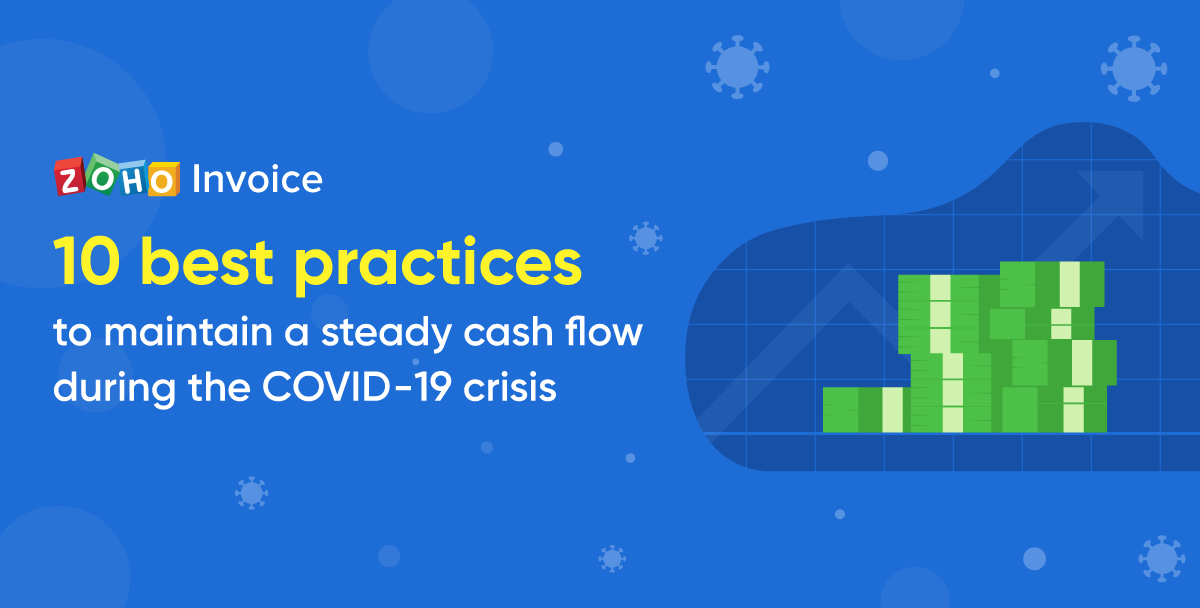We’re all witnessing the effect that COVID-19 is having on businesses throughout the world. As CX expert Shep Hyken remarked: “In difficult times, it is more important than ever to maintain or boost the customer experience.” While standing up for customers is definitely a priority, it’s equally important to have a positive cash flow and ensure you don’t run low on reserves. Here are a few best invoicing practices that can help you maintain a balance:
Best Invoicing Practices
1. Communicate clearly and candidly with your customers
Customers might have to make tough choices during these uncertain times, and they may have questions regarding cancellation and refund policies or your Business Continuity Process (BCP). A clear communication strategy can not only address those ambiguities but can also build trust with your customers.
If you offer a self-service portal where your customers can log in and view their transactions, you can display information about these policies there.
2. Be approachable
If you are sending out automatic payment reminders but your customers are having problems paying, they need a way to contact you quickly and discuss their options. Make sure you include all your contact information in the reminder emails that you’re sending.
This extends to cancellations as well—if a customer decides to call you before canceling the service, it’s a chance to figure out a solution so you don’t lose their business. Make sure you take advantage of these opportunities!
3. Relax deadlines
Your customers’ priority at this moment will be keeping their family and loved ones safe. So your estimates might be accepted a little later than usual, and your invoice payments may come in a little later too. Instead of bombarding customers with multiple reminder emails, consider relaxing these deadlines for a little while.
4. Allow partial payments for invoices
As a business owner, your goal is (and should be!) to get every invoice 100% paid on time, every time. However, in times like this, if your customers are willing to make partial payments rather than a bulk single payment, allowing them to do so helps improve your cash flow. And so it is one of the invoicing practices.
5. Invoice factoring
Factoring invoices is an option that businesses can use to meet their immediate cash needs. The businesses get paid a reduced amount upfront by the factoring companies, who in turn collect payments from customers when they are due.
6. Offer credits and discounts
By offering discounts for your outstanding invoices, you are proving that you care enough about your customers to give them a bit of a break.
Alternatively, you can offer credits to be applied on their next subscription renewal.
7. Pause, don’t cancel
With worldwide travel restrictions and shutdowns in place, businesses have already started slowing down. It’s only natural for your customers to cancel some of their services. To keep them from churning permanently, provide an option to pause the subscription for a while, instead of canceling it altogether.
Alternatively, you can extend the next subscription renewal date by a month or two without charging the customers. Think carefully before offering this, though, because not all businesses can afford to continue offering services free of charge.
8. Write off invoices in special cases
Even after you offer a discount or extend the deadline for payment, if a customer is severely impacted by this pandemic and won’t be able to pay you back any time soon, you can try to collect partial payments and write off the remaining invoice amount.
Writing off an invoice is the last resort. To ensure you don’t write off too large a portion of your receivables, it’s good to regularly monitor your bad debt incurred during this period. And so it is the on of the best invoicing practices.
9. Increase credit limits for loyal customers
If a customer has been with you for a long time and is sticking with you during this period, an increased credit limit is a good way to thank them for their business. By increasing their credit limit, you are letting them know that you continue to want their business.
10. Know why your customers leave
If your customers choose to cancel their subscription, you should definitely ask them if they’d like to give a reason. This information can not only help you understand your customer trends, but also reduce your churn. Depending on the reason they enter, you can have your customer support or retention team give them a call and try to win them back.
Though some of these tips might have a negative effect on your finances temporarily, they can gain you long-term benefits like customer loyalty and customer retention, which will help your business recover more easily. And hence helpful for invoicing practices.
To help you implement these strategies, Zoho’s invoicing solutions—Zoho Invoice and Zoho Subscriptions—offer all of these functions either directly or through integrations.
Did you find these tips useful? Can you think of some other cash flow strategies that businesses can use to get through difficult times? Let us know in the comments.
Take care and stay safe! We’ll get through this together.





